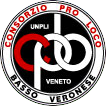GEOGRAPHY
Minerbe is 6 km from Legnago and 39 km south-east of Verona. The town, with its surface of 16.84 km², is located at an altitude of 10/20 m above sea level. There are no noteworthy rivers on its territory, only canals fed by the waters of river Adige. Its fractions are: Santo Stefano, Anson, Stopazzola and San Zenone. It borders the Comuni of Legnago, Bonavigo, Pressana, Bevilacqua, Boschi Sant’Anna and Veronella.
ETYMOLOGY
Minerbe’s origins are pre-Roman, and it is remembered as “Vicus Minervinus”, referring to a temple of the Roman Goddess Minerva. The town’s name anyway changed several times throughout history. In the writings of deacon Dagilberdo the following names are mentioned: Minervae (year 932), Menervio (year 1035), Menerbio (year1228), and finally Minerbium, hence Minerbe.
HISTORY
As evidenced by the remains of the pre-Roman settlements, now hosted by the museum Fioroni of Legnago and the Archaeological museum of Cologna Veneta, Minerbe was already inhabited by the Bronze Age populations. Vicus Minervinus, the ancient town’s name, was one of the wealthiest and most fertile of the area during the Roman domination. Through that age a temple to goddess Minerva was built, where now the church of San Zenone, on the walls of which can be seen a Roman Inscription. It appears that in this place San Zenone practised Christianity gathering several proselytes. Due to the discovery of hundreds of skeletons under the estates of Weil Weiss and Stopazzola, it is believed that in 312 there took place a battle between the troops of Massenzio and the army of Costantino. After the fall of the Roman Empire, the famines, the barbaric plundering and the frequent floods brought the lands to a state of neglect. The village of Minerbe later became property of the Veronese Curia, which granted it as a fief to the monastery of San Michele di Campagna. Minerbe became a Comune in 1199 under the jurisdiction of podestà Manfredino. Once under the domination of the Scaligeri, Minerbe became parsonage of the counts Bevilacqua who obtained rights and privileges later confirmed by doge Steno when, in 1405, a wide portion of the Veronese province was conquered by the Serenissima Repubblica di Venezia. That is when the works of land reclamation and draining granted access to new and fertile lands, which were sold to wealthy families that would later build manors and country houses bound to become actual Villas. The history of the town was marked by the alternation between moments of peace and moments of destruction, epidemics, fires and plunderings by the armies passing through or camped nearby, in addition to the dreadful flood of river Adige of 1776. The hardest and heaviest battles, however, took place between 1796 and 1813, with the war between Austria and France. From 1815 to 1866 Minerbe faced the harsh Austrian police regime, with its oppression and requisitions that caused a growth of the banditry phenomenon. After the annexation of Veneto to the Kingdom of Italy, a long time of hardship was finally over. Agriculture and craftsmanship thrived once again bringing back Minerbe to its original wealth.
ART
The current church of San Zenone is one of the most ancient of the province, it was built upon the foundations of the ancient parish of 1035, that was, in turn, built on the ground consecrated to the Roman Goddess Minerva. Mentioned both in a papal bull of Eugenio III of 1145 and in a diploma of Emperor Federico I in 1155. Its current baroque façade displays two recesses containing two statues by carver Ubaldo Fontana of the hermits San Benigno and San Caro. Inside it there is a precious baptistery of 1454, some exquisite frescos and a wooden sculpture of the 1400s that portrays “la Madonna in trono”. The church of Minerbe is one of the most impressive holy buildings of the area. Its construction started in 1824 and was completed in 1848, while the façade was finished in 1911. Amongst the several paintings, there is also the noteworthy altarpiece of San Lorenzo, painted by Ugolini in the 1800s. Of great historical and artistic value is the church of Santa Lucia, which dates back to the ninth century, also known as Santa Maria dell’Ospedale, which acquired its current appearence in the sixteenth century. Worth seeing are the Villas and the palaces of considerable value, evidence of the wealthy former local nobility, such as: Villa Spolverini, villa Burzio, villa Stopazzola with the oratory of Santa Mariam villa Buri-Corte Campeggio, villa Weil Weiss, villa Ferri, villa Bernini Cavazzocca, villa Angiari current town hall, Villa Pignolati – Nicasola and baroque palace Behghinatus appointed as national monument. In San Zenone there are Villa Visconti and Villa Guarienti (Count Alliata).
ECONOMY
The international companies of mechanics and carpentry lead several other industries, craftsmanship and agricultural businesses. In Minerbe farming has always played an essential and critical role, being once the main activity. On the town’s territory, four rice mills and some still operative firms are still present today, in addition there are important cattle and bird farms.
